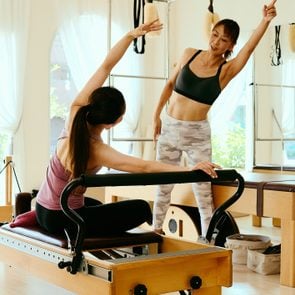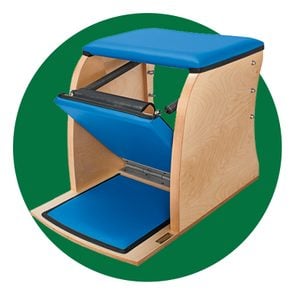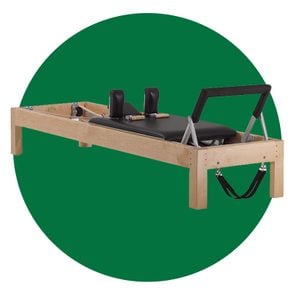6 Pilates Moves for a Stronger Core
Updated: May 10, 2021
Work your way to a stronger core with these top Pilates moves curated by a Pilates trainer. The best part: no gym membership required.
What is Pilates?
If you’ve done Pilates before, you know it’s excellent for building core strength. In fact, the core is the foundation of all Pilates movements, getting you to activate the deep muscles of your midsection.
“The basic premise with the core and Pilates is that you need the core to move your body efficiently,” says Adefemi A. Betiku, a New Jersey-based physical therapist and certified Pilates teacher. “We’re constantly, with every single movement, cueing clients and patients to activate the deep core muscles.”
Throughout a Pilates session, you focus on working these muscles the entire time, and that has some powerful advantages to your daily life.
Learn why Pilates is so beneficial and how to do moves that’ll get you a stronger core.
What is the core?
Think of your core like a house, Betiku says. Your transverse abdominis, deep abdominal muscles, are like the walls of the house. Your diaphragm, the muscle you activate when breathing is the roof.
Your pelvic floor muscles are—you guessed it—the floor of the house. You can consider your glutes the foundation of the house, Betiku says.
Add a muscle called lumbar multifidus (it supports the spine) to the list of deep core muscles; think of it like the back wall of the house. Some say the internal obliques belong to this group of intrinsic muscles. They’re the sides of the house, if you will.
Pilates works all of these muscles.
The benefits of Pilates core exercises
While you might typically turn to crunches, sit-ups, or bicycles to work the abs, these exercises primarily target the six-pack muscles (also known as the rectus abdominis). Pilates, on the other hand, gets down deeper into your middle to help you strengthen and stabilize your center.
That’s why the practice stands out from other forms of movement, says Melanie Carminati, a physical therapist, Pilates instructor, and founder of Inspira Physical Therapy in Brooklyn, New York.
“Pilates is different than traditional core work because it’s focused on targeting these deep stabilizing muscles, which is important for spine and organ health and overall vitality and quality of life,” she says.
The practice also features a mindfulness element, bringing awareness to the breath and body during the moves, she adds.
People with weaker transverse abdominis muscles tend to experience low back pain, Betiku says. But because Pilates targets these deep muscles, it can help you stay ache-free.
How to activate your deep core muscles
As you’re moving through the various Pilates exercises, your instructor will say words or phrases aimed at helping you work the deep muscles of your core.
To target the transverse abdominis, Pilates instructors might say to gently pull the belly button down or in toward the spine. Getting the glutes involved in the movement requires simply squeezing your backside.
In order to fire up the pelvic floor, you’ll incorporate kegels into your Pilates practice. To know if you’re doing kegels correctly, think about how you’d stop yourself from peeing. That contraction is a kegel, Betiku explains.
The importance of breathing
Breathing is a big part of Pilates—that’s where the mind-body connection is made. Because it activates the diaphragm, proper breathing makes moves more efficient, optimal, and effective, Betiku says. So you’ll hear cues about breathing throughout a Pilates class to help with this activation.
To help you focus on your breath right from the start of a Pilates session, an instructor will likely have you inhale to prepare for an exercise.
A Pilates instructor might also have you focus on breathing into your side for side bends or twists.
No matter the movement, you’ll find that paying attention to your breath through each exercise brings mindfulness and core engagement to your entire routine.
Pilates exercises for your core
As you work through these top Pilates core exercises, which Betiku curated, remember to focus on those deep core muscles. And pay attention to your breath.
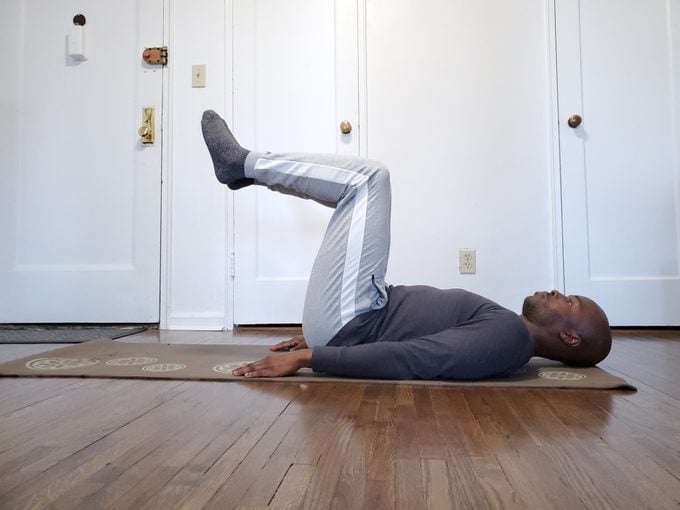
Pilates 100
If you have persistent back pain, Betiku suggests skipping this one. Otherwise, it’s a great exercise to fire up the deep core musculature. It’s also a signature Pilates move.
Start by lying on your back, arms extended by your sides. Bring your legs to a tabletop position, with your knees bent and aligned over your hips. Pull your belly button down toward the mat.
Lift your chest, neck, and shoulders off the floor. Lift your arms from the floor. Pulse your hands up and down while breathing in and out for 30 seconds.
If you’re ready for a challenge, straighten your legs and lift them at a diagonal.
(You can also try these leg exercises at home.)
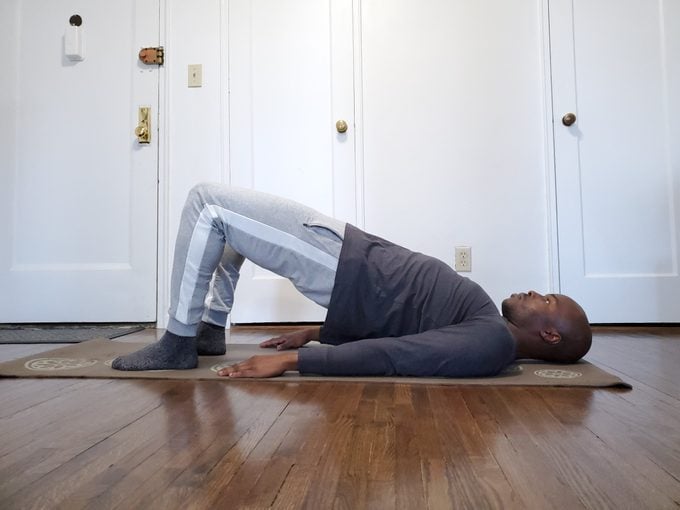
Bridge
Turn up the burn on your butt with bridges, which target the glutes through hip extension.
Start by lying on your back, arms extended by your sides. Bend your knees and plant your feet on the floor, hip-width apart. Squeeze your butt and lift up your hips. Your torso should form a straight line with your thighs.
Pause at the top of the bridge, then slowly lower back to the floor. Repeat for 10 reps.
If you’re ready to turn this up a notch, lift one foot off the floor and do a single-leg glute bridge, performing 10 reps on each side.
(A glute bridge is one of many warm-up exercises to do before your workout.)
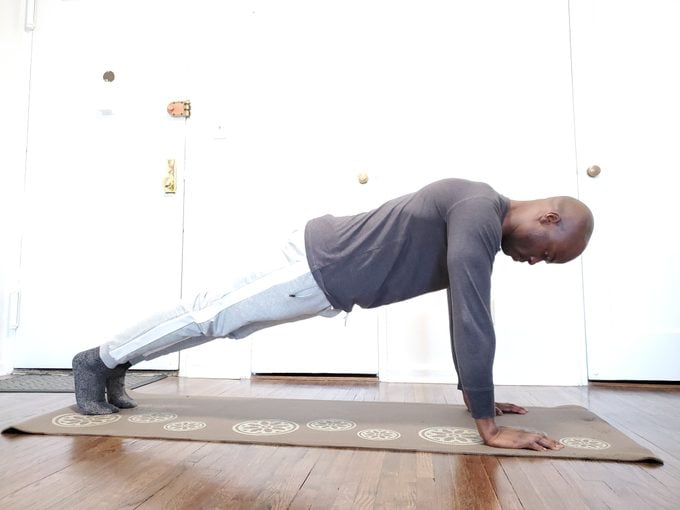
Plank
“A plank a day keeps the physical therapist away,” Betiku says. Do this exercise often to strengthen the transverse abdominis in particular.
Start by placing your forearms or hands on the ground, shoulder-width apart. Your shoulders should align over your wrists and elbows.
Step your feet back so your body forms one straight line. Make sure your back is not arched (think about tucking your tail between your legs) or rounded. Hold for 30 seconds.
If you feel sturdy during this move, upgrade your plank: Lift one leg up and hold for 30 seconds. Then switch to the other side. This forces the obliques to work even harder.
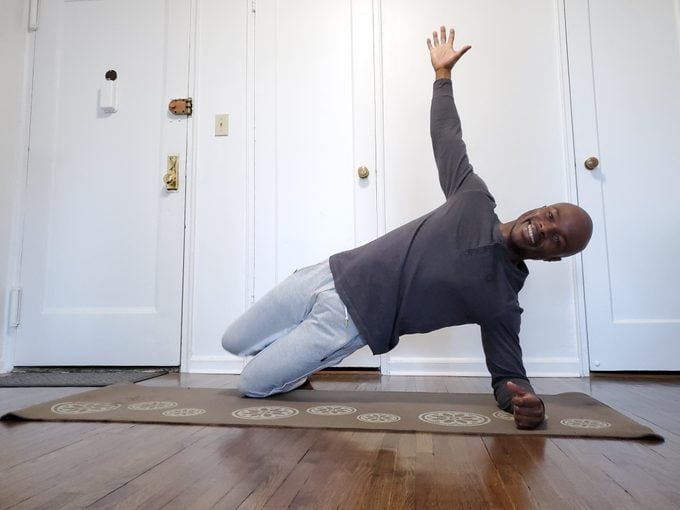
Side Plank
This is another exercise that targets the transverse abdominis. Betiku typically teaches side planks in a modified position because it’s a real challenge for the deep core muscles and especially the obliques.
Start lying on your left side, with knees bent and hips and shoulders stacked. Place your left forearm on the floor. Lift your hips so you form a diagonal line from shoulder to hip. Hold for 30 seconds.
If this feels easy, lift the top leg, straightening it out to the side. Hold for 30 seconds, or lift and lower the leg for 10 reps per side.
(Here are some easy plank exercises to add to your workout routine.)
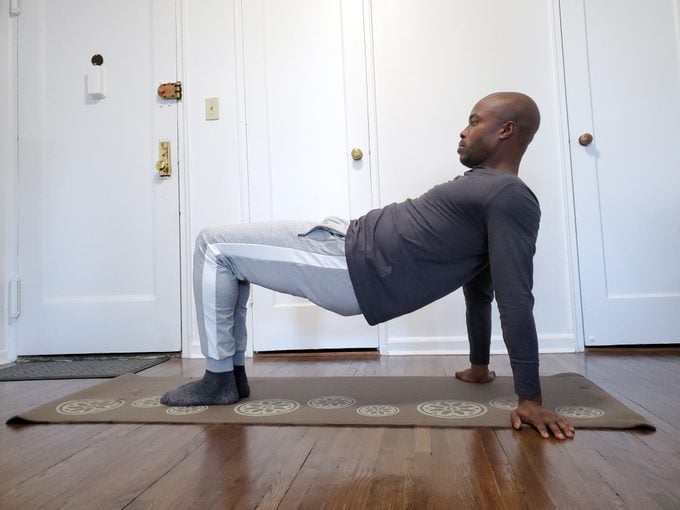
Reverse Plank
This exercise works not only your abs but also your glutes and hamstrings, Betiku says.
Start seated, with your knees bent, legs together, and feet planted. Keep your chest lifted tall. Place your hands on the floor behind you, fingertips pointed out to the sides.
Squeeze your glutes and lift your hips. Keep your chest tall and look straight ahead. Hold for 30 seconds.
If this feels doable, straighten your legs in front of you to increase the challenge. Or lift one leg to turn on the obliques.
(This is how long you need to hold a plank.)
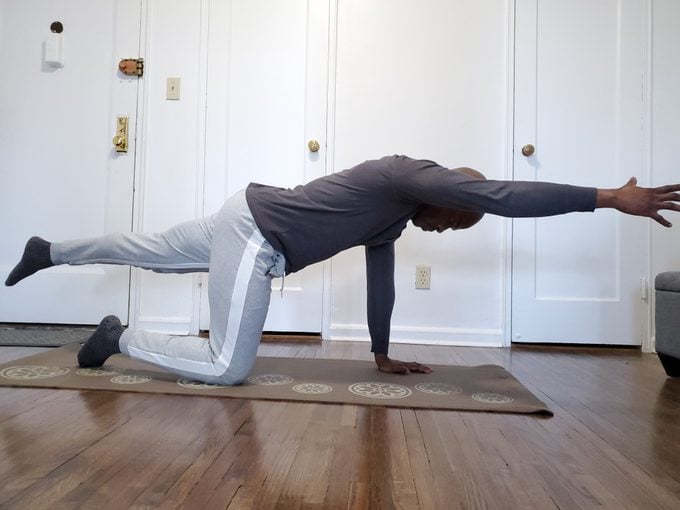
Quadruped Extension
This move adds an anti-rotational component to the core, which helps with stabilization.
Start on all fours. Align your shoulders over your wrists and keep your knees in line with your hips. Breathe deeply, then extend your right arm and left leg straight out. Be sure to keep your shoulders and hips square to the floor.
Pause, then bring your right elbow toward your left knee, meeting at the center of your body. Extend your arm and leg back out.
Repeat for 10 reps, then switch sides.
Next, find out if Pilates can aid weight loss.

